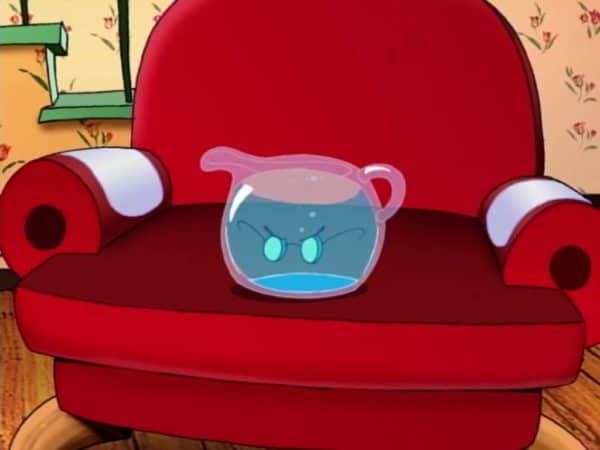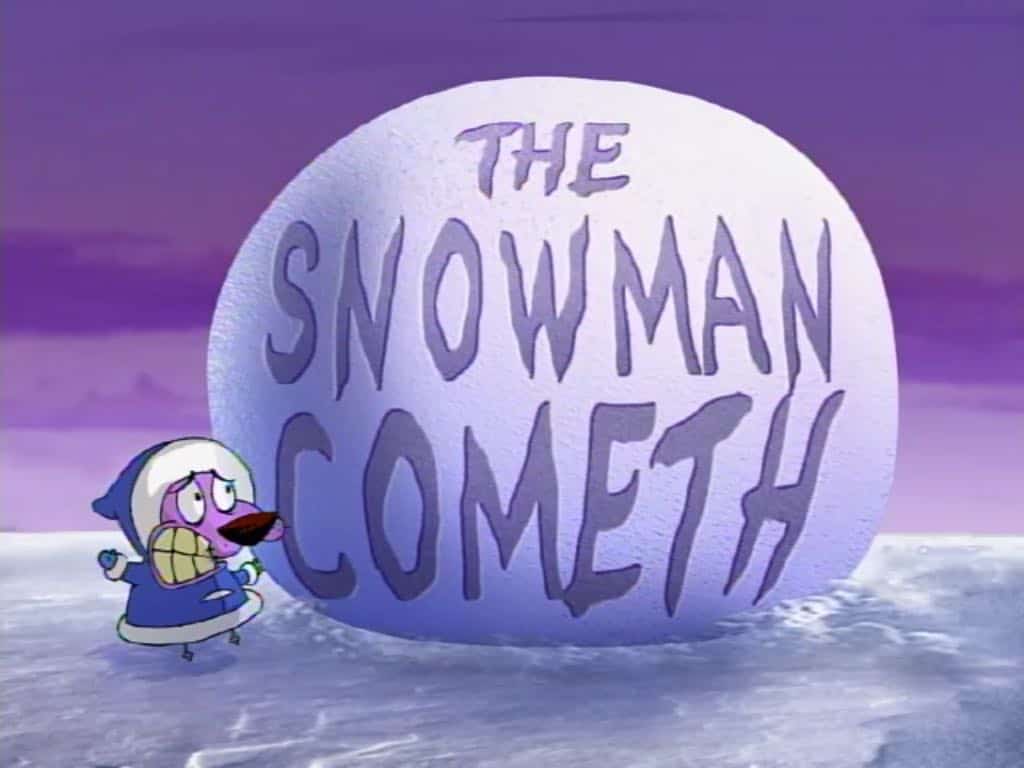In The Snowman Cometh episode of Courage is interesting for the way in which the writers comically represent a part of science which is difficult to understand and even harder to portray on screen.
SETTING
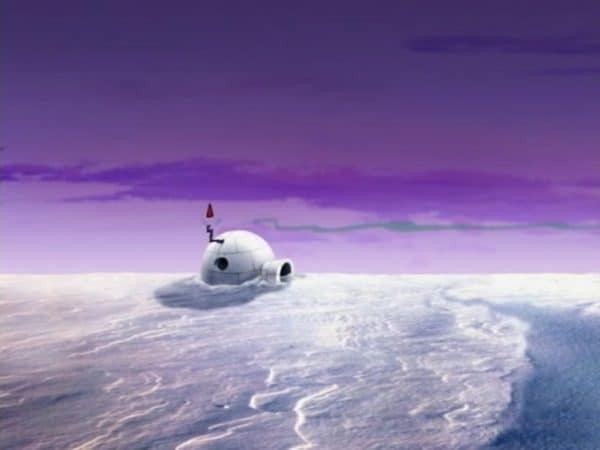
Most of the Courage episodes are set in the Bagge family home in the middle of Nowhere but by this point in the series the writers must be looking around for ways to shake it up. This episode opens with a familiar picture of Eustace to the right and Muriel to the left of the screen, but instead of sitting on their rocking chairs at home they are inside an igloo.
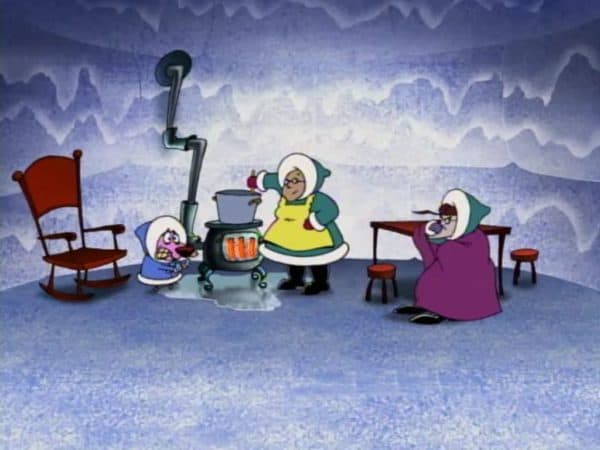
Via Eustace’s complaining we immediately learn why they are there: Muriel booked a holiday at a resort without checking first that the resort was at the North Pole.
The takeaway storytelling lesson here: Exaggeration, exaggeration. There are plenty of stories about characters who book a nice holiday and then everything goes wrong. Typically, first of all, the weather is bad. There’s an example of this in one of the Diary Of A Wimpy Kid movies — the father takes everyone on a fishing holiday and it rains the entire time. The mother is grumpy on the way home. (One enthusiastic parent, one interminably grumpy parent is a common duo.) Here we have a holiday which is not only ‘a bit too cold’ but ridiculous. There is no place colder than the North Pole.
When writing a comical story, exaggerate a bit, then plonk on another 20 per cent. Whatever exaggeration you’ve chosen, linger on it. It is so cold inside this igloo that the soup immediately refreezes in their bowls.
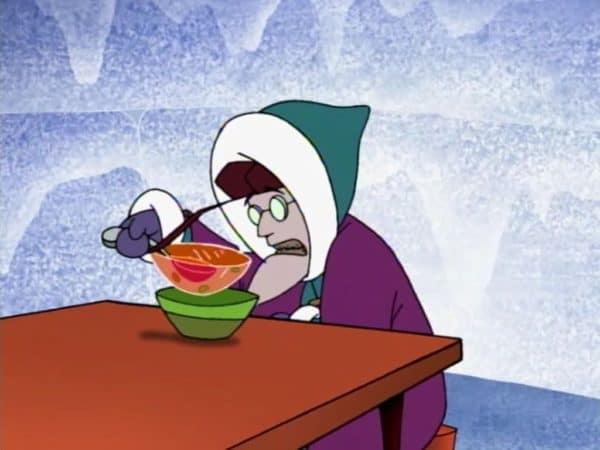
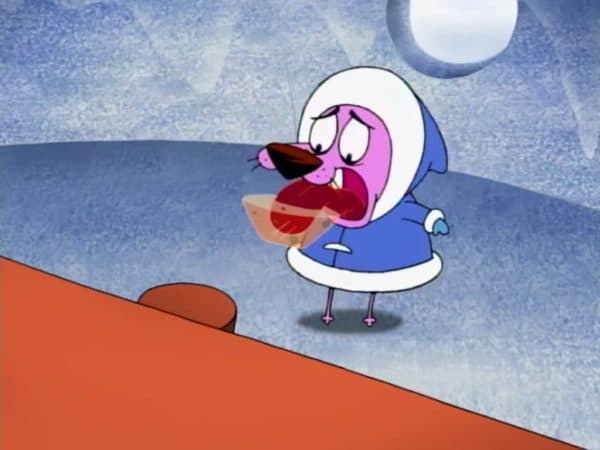
STORY STRUCTURE
SHORTCOMING
As usual, Muriel is making the best of things and is having a great old time in the igloo but Eustace is grumpy and Courage is the lowly dog who is required to do exactly as Eustace says.
DESIRE
Courage wants to stay inside the igloo where it is a bit warmer but they are running low on wood for the burner so Courage is sent outside to find some.
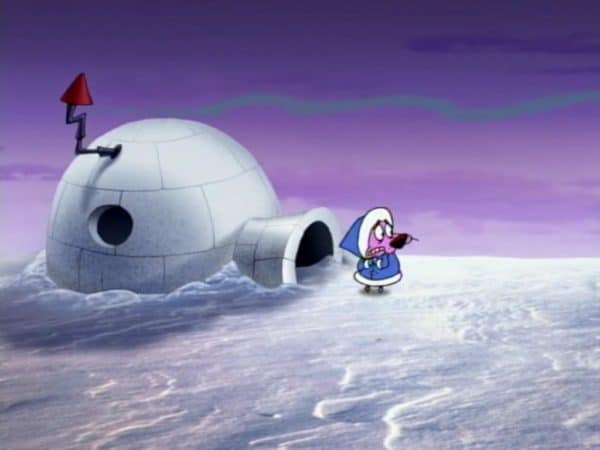
OPPONENT
Outside in the cold, the camera pans and we see nothing but flat snow. But there is one thing: a snowman, and the snowman has wooden sticks for arms. Courage takes one of the arms and is alarmed to hear it talk to him. He also mentions that it wasn’t here before.
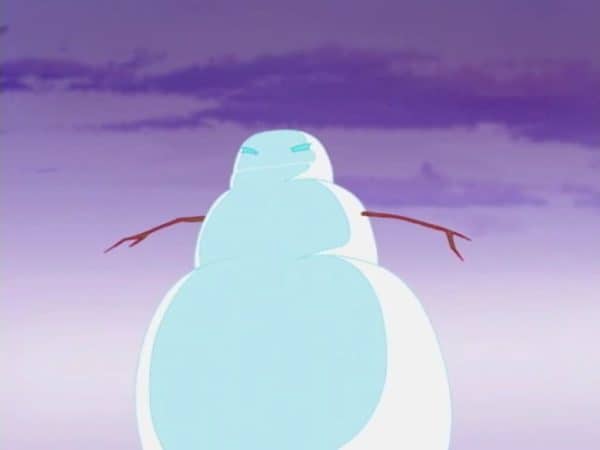
This is an interesting choice because it’s a commonly employed trick in this series — things just appear (in the yard, from behind backs) and we are not encouraged to wonder how they just popped up. It’s interesting, therefore, that the writers can happily decide when they would like this sudden appearance of things to be a wonder.
The snowman looks ominously through the window. Courage is frantically trying to alert Eustace and Muriel.
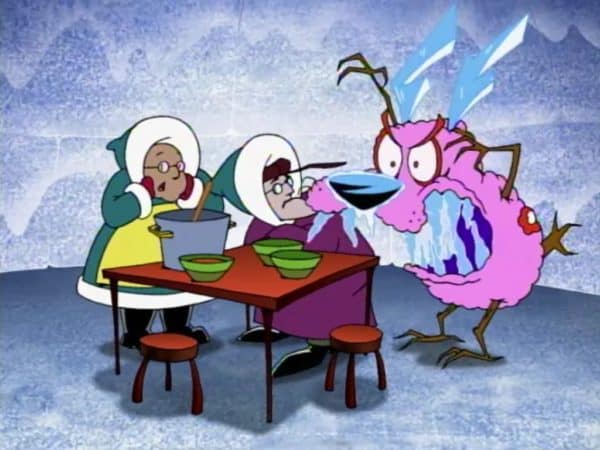
Of course, when they go outside to look for themselves the snowman is gone. So far, just like most of the other Courage episodes.
PLAN
Next we switch to scenes featuring the Snowman. He lives in a castle made of snow, lined with famous snow creatures. He wants to become immortal.
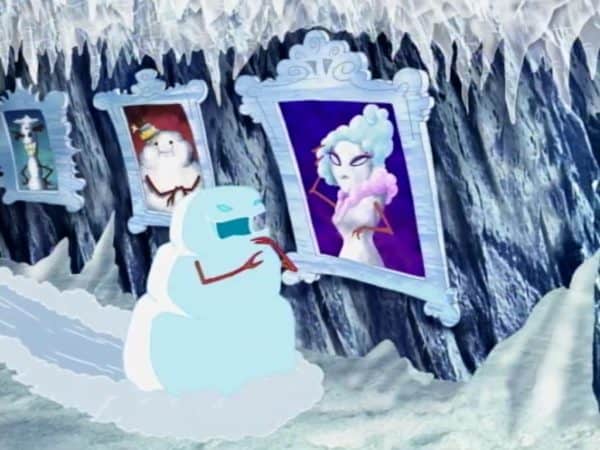
Courage sets out to find this Snowman and keep an eye on him. With Courage watching on, the Snowman delivers a dramatic monologue which — to any writer’s ear — would sound ridiculously on the nose were it not a comedy.
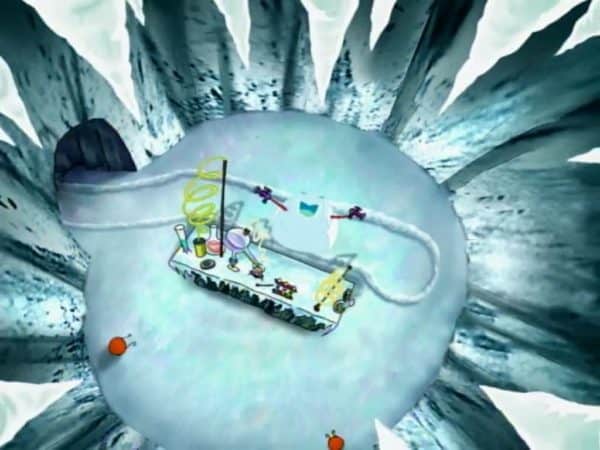
We learn from this monologue exactly what the Snowman’s intentions are: He is determined not to melt despite the warming temperatures, and he has formulated a plan to tap the two humans (Eustace and Muriel) of the genes which allow them not to melt.
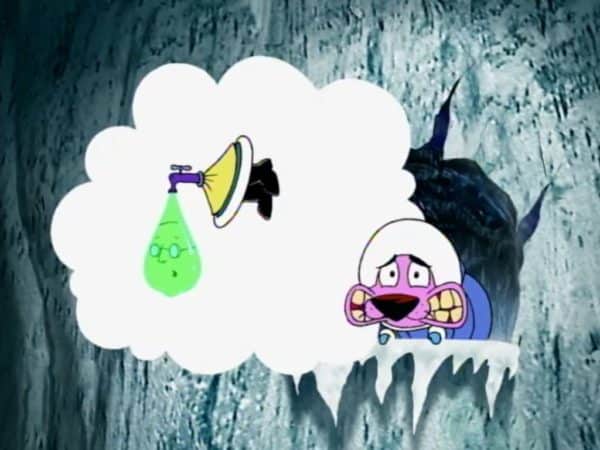
This is where it gets interesting: How is this visually represented? With taps — two actual faucets that you’d buy from a hardware store.

The writers/animators obviously realised that it’s so difficult to portray this storyline accurately that they might as well go to the opposite extreme and instead of the usual spiral image most of us know to represent ‘genes’, the genes on this show are a syrupy green goop which can be tapped out of someone by plugging a faucet into their head. All you need are a few test tubes with which to catch the solution.
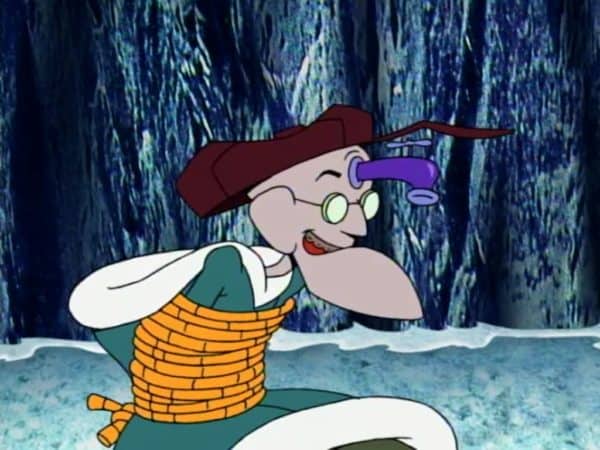
This is worth pointing out because it’s a huge advantage of comedy — there is really no need to be scientifically accurate. However, there may well be an uncomfortable in-between space, wherein mimetically minded audiences will criticise a sequence which is sort of like science but not really. See for example The Very Hungry Caterpillar Lied To You As A Child. The criticism there is that a caterpillar transforms inside a chrysalis, not a cocoon. I wonder if the publishers/writers believed chrysalis to be too difficult for the target Lexile rating — I have the distinct memory of struggling with that word as a six or seven year old when it was on my spelling list. The problem is that a lot of adults don’t know the difference between a cocoon and a chrysalis (I didn’t notice the error until it was pointed out), so perhaps the rules of thumb are:
- If you are able to use the correct words use them
- If you’re going to get science wrong get it really, really wrong
- Unless you’re willing to get the science exactly right, avoid that middle ground in which the story appears to be pedagogical.
When Courage comes back to the igloo after his reconnaisance trip he finds Muriel’s apron. Both Muriel and Eustace are gone. It is up to Courage to save them.
BIG STRUGGLE

The big struggle sequence looks a bit like the beginning of the first Ice Age movie, making use of all the possible natural features of the North Pole as it exists inside our imaginations: Sliding down steep, snowy hills, falling into holes in the ice, re-emerging in ice-blocks.
For variation we see Courage in very high places and also very low — including under the water. In an exaggerated story, make the most of the natural features of your chosen landscape. Go high, go low — go big, go small, and everything in between.
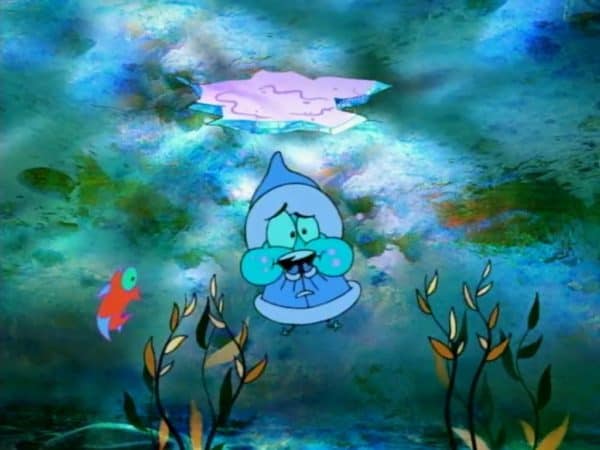
Single-scene challenges must be overcome by Courage using nothing but his wits. Here he sucks his way out of a prison made of ice bars.
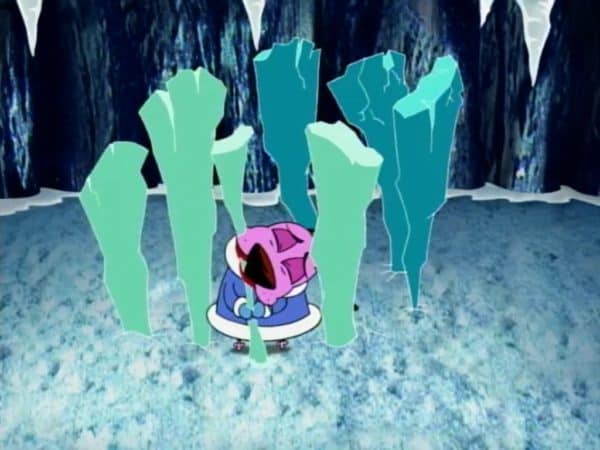
Courage saves the day by ramming a jug onto the Snowman’s head. Despite being made of snow, the Snowman can’t get it off.
SELF-REVELATION
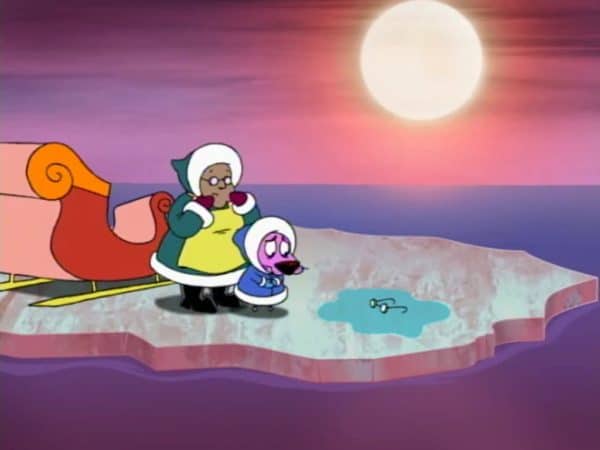
The revelation is simply that they’re going to be all right after all, having escaped the Snowman. But notice where this revelation occurs — in front of a huge evening sun, on the Arctic equivalent of a ‘tropical’ island. Revelations often take place either in high locations (a la the Bible) or in places of natural beauty.
Like any non-tragic sea movie, a ship appears to save them.
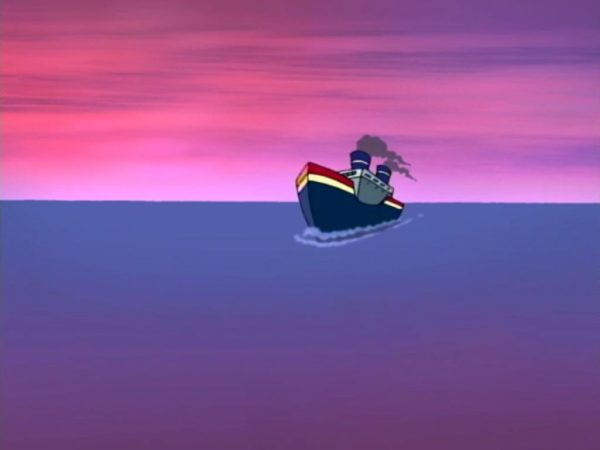
NEW SITUATION
Eustace, unfortunately, has melted. His genes have been tapped. Courage mops him up.
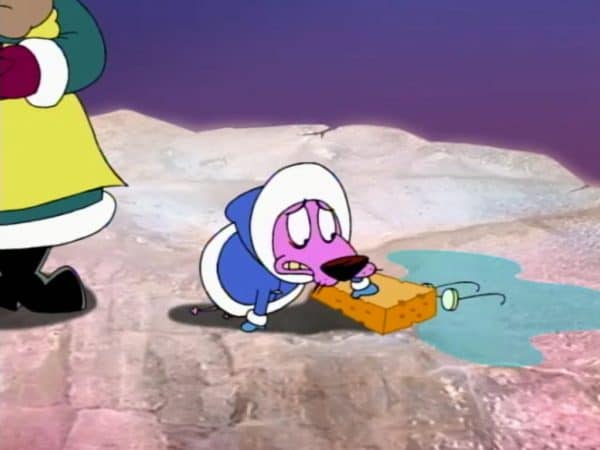
At home, the camera lingers upon Muriel and Courage just long enough for us to wonder what’s happened to Eustace.
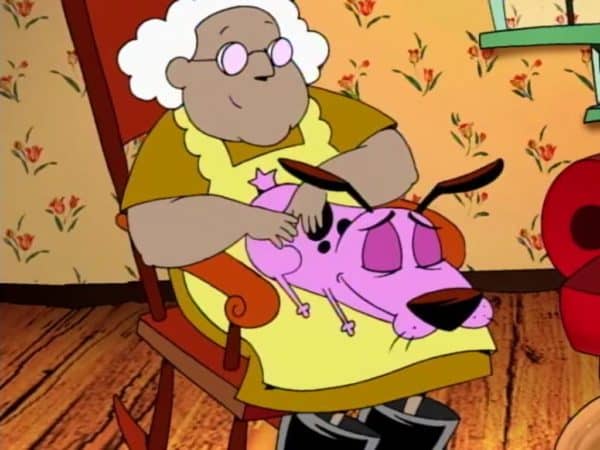
The great thing about this recurring series in which characters never change — Eustace can end as a jug of water in this episode and be miraculously back to his human old self by the very next episode. And we never wonder how that happens. This is basically all the alternative universes of a couple — in one universe Eustace melts into a jug, in another he is propelled into space, in another he is mummified. And so on and so forth.
